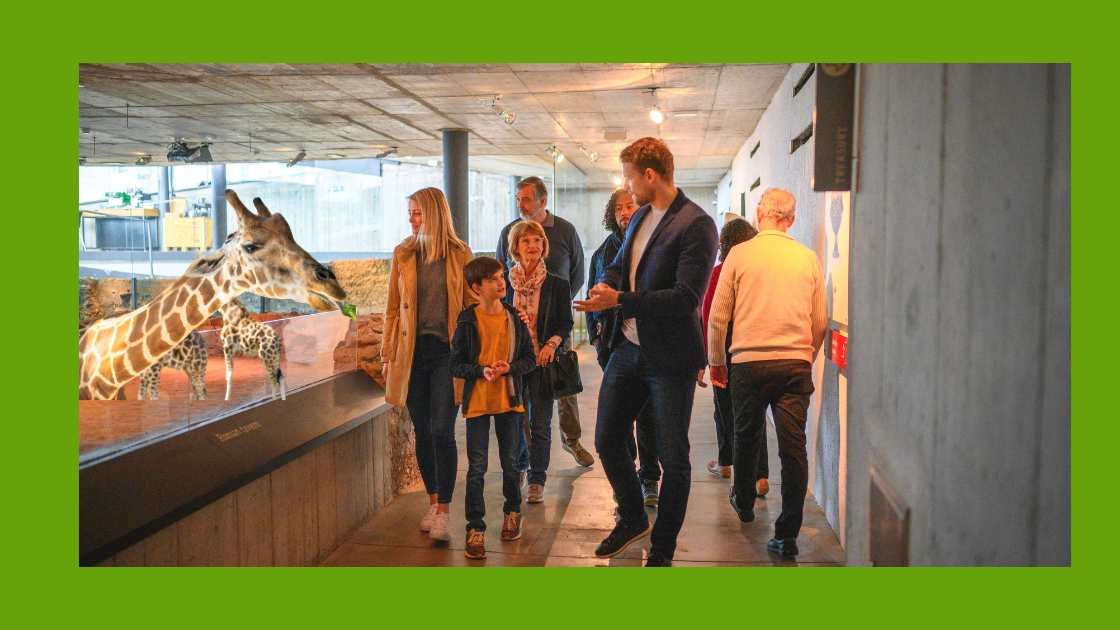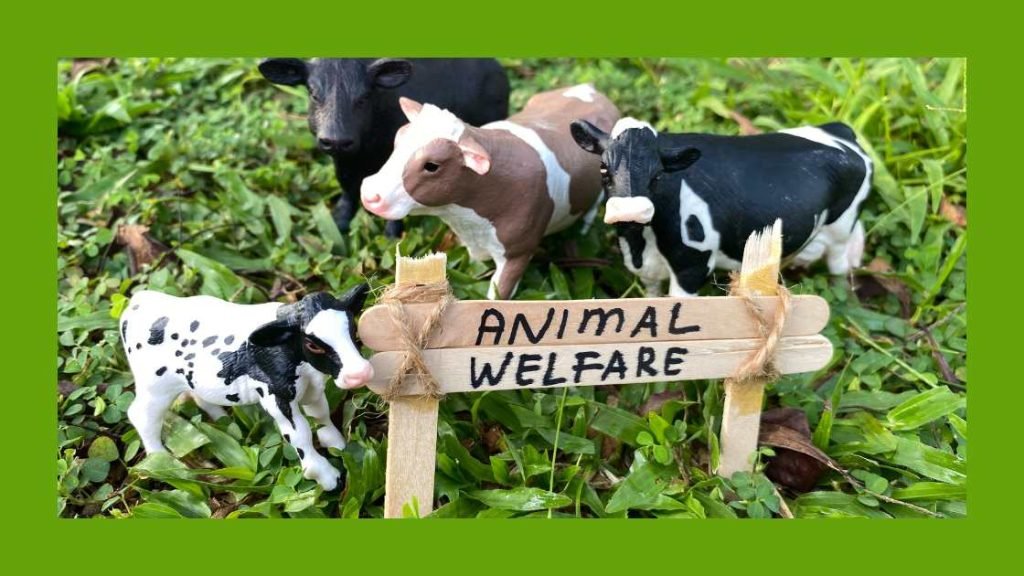Zoos offer educational opportunities and species conservation, but can also impose unnatural habitats and stress on animals. They promote research but often face criticism for limited living conditions.
Let’s talk about zoos! Zoos are like animal homes that help keep animals safe. They’re important because they take care of animals that might be in danger.
Zoos also help animals have babies, which is super important for their survival. But, taking care of animals in zoos can be tricky sometimes. There are good things and some challenges too!

Zoos are like big schools for learning about animals. You might wonder, “What are the advantages and disadvantages of zoos?” Well, they’re cool because you get to see and know animals you might not find outside.
This helps people feel close to nature and might make some kids want to protect animals when they grow up. But, on the other hand, some people worry that keeping animals in zoos is okay.
They think maybe zoos can’t give animals the best homes like they have in the wild. Zoos have to find a good balance between teaching us and keeping animals safe and happy.
Table of Contents
ToggleIntroduction To Zoos

Zoos are like homes for animals from different parts of the world. People can visit these special places to see amazing wildlife.
Zoos help teach us about animals and how to take care of them. They want to make sure we love and respect nature when we visit.
Historical Roots Of Animal Captivity
A long time ago, kings and emperors had special places to show off cool animals. They did it to look strong and make visitors happy.
At first, these places were only for the kings and not for everyone. Now, zoos are different. They are made to teach us about animals and help scientists learn more. Zoos today are much better than the ones long ago.
Current Role Of Zoos In Society
Zoos are like super important homes for animals. They help save animals that are in danger by making sure they have babies. Zoos are like schools where we learn about animals and how to take care of them. They also do cool studies to learn more about different animals. Zoos aren’t just for fun – they’re like superhero places that help save animals!
Educational Benefits Of Zoos
Educational Benefits of Zoos play a key role in the way we understand and interact with wildlife. They bridge the gap between humans and animals.
Through up-close encounters and dynamic learning environments, zoos educate people of all ages about the wonders of the animal kingdom.
Learning Opportunities For Visitors

Zoos are living classrooms that offer numerous learning opportunities:
- Interactive exhibits engage visitors with hands-on experiences.
- Zoos offer guided tours for a deeper understanding of animal habitats.
- Animal feedings and demonstrations reveal creatures’ behaviors.
These experiences turn a day at the zoo into a fun, informative outing for families and school groups.
Conservation Education Initiatives
Zoos play a crucial part in conservation education by:
- Informing visitors about endangered species.
- Explaining the impact of human activity on wildlife.
- Encouraging environmentally friendly practices.
Their efforts often inspire visitors to participate in conservation actions.
| Activity | Educational Impact |
|---|---|
| Workshops | Builds knowledge in a hands-on setting |
| Outreach Programs | Bring zoo education to the community |
Conservation And Species Preservation
Zoos are like superhero homes for animals. They help save endangered species from danger. Zoos also teach people about the different kinds of animals. Let’s find out how zoos do these important jobs!
Breeding Programs For Endangered Species
Breeding programs in zoos are a lifeline for many species. They are at the brink of extinction. These programs look to increase numbers safely. They keep genetic diversity strong within populations. Animals like the Californian condor have seen real benefits. These are from such coordinated efforts in the zoo community.
- Genetic Diversity: Ensures a healthier, more resilient animal population.
- Research: Helps scientists understand reproductive techniques.
- Survival Skills: Young animals can learn essential behaviors safely.
Reintroduction And Habitat Restoration Efforts
Zoos play a part in reintroducing animals back into their natural habitats. They restore these habitats too. A famous success story is the black-footed ferret. They were once declared extinct in the wild. Zoos helped breed and reintroduce them. Their populations are growing now.
| Species | Reintroduction Status |
|---|---|
| Black-footed Ferret | Successfully Increasing |
| Golden Lion Tamarin | Populations Reestablished |
Zoo conservation extends to habitat work. Some zoo projects plant trees. They make new homes for wild creatures. They clean waterways too. These actions benefit many animals and plants. They improve the quality of life for everyone.
Educating the public on these efforts is also key. Zoos let visitors see they’re part of a larger ecosystem. This fosters a sense of responsibility and care for the environment.
Economic And Recreational Aspects
Exploring the impact of zoos, we sink into the economic and recreational aspects. Zoos aren’t just animal enclosures.
They are hubs of activity that benefit the economy and provide entertainment. We will look at how zoos serve as tourist attractions and their role in job creation.
Zoos As Tourist Attractions
Zoos draw millions of visitors each year. These visitors contribute to the local economy by spending money. They pay for admission, food, souvenirs, and more.
- Family-friendly outings: Zoos offer interactive experiences for all ages.
- Special exhibits: They can attract tourists with unique, temporary exhibitions.
- Annual memberships: These encourage repeat visits and ongoing revenue.
Job Creation And Local Economic Impacts
Zoos are important employers. They hire staff for various roles, from animal care to management.
| Job Type | Description |
|---|---|
| Zookeeper | Cares for animals daily. |
| Guide | Leads tours and educates visitors. |
| Vendor | Sells food and gifts to guests. |
Zoos not only create jobs but also boost related sectors. Hotels, restaurants, and transport services grow with the influx of tourists.
Through these economic and recreational aspects, zoos leave a sizeable footprint on the local economy. They’re key in regional tourism strategies.
Animal Welfare Concerns

People are talking a lot about how animals are treated in zoos. Some people think zoos are good for saving animals and teaching us, but others worry about how happy the animals are.
Let’s look at this to understand how animals feel in the places we make for them.
Habitat Limitations And Psychological Effects
Animals in zoos often live in spaces much smaller than their natural habitats. This lack of space can lead to several problems:
- Restricted movement affects physical health.
- A lack of environmental complexity can cause boredom or stress.
- Natural behaviors are often limited, impacting overall well-being.
Psychological effects are also prominent. Animals may display signs of distress, known as zoochosis.
These behaviors include pacing, over-grooming, and self-harm. Habitat limitations have a direct impact on an animal’s mental health.
Controversies Surrounding Captivity
The ethics of keeping animals captive spark significant debates.
- Some argue that zoos provide safe havens for endangered species.
- Others counter that zoos cannot replace the freedom and variety of the wild.
Controversies hinge on the question: Do the educational and conservation benefits of zoos justify captivity?
Critics highlight the fact that not all zoos meet the necessary standards to ensure animal welfare. This raises the question of whether the humane treatment of animals in zoos is consistent and reliable.
The Ethical Debate On Animal Rights
The question of whether zoos are ethical hinges on animal rights. Some believe zoos protect species. Others argue they deny animals freedom. This complex ethical debate involves philosophical, legal, and moral considerations.
Philosophical Arguments For And Against Zoos
Philosophers ponder over zoos’ moral grounds. They look at animal welfare and human benefits. Let’s break down their key points.
- For: Zoos save endangered species. They educate people. They foster respect for animals.
- Against: Zoos can restrict natural behaviors. They may cause animal stress. This raises serious moral concerns.
Legal Protections For Captive Animals
Laws safeguard animals in zoos. They set standards for care. But effectiveness varies by country.
| Law | Purpose | Protection Level |
|---|---|---|
| Animal Welfare Act | Set minimal care standards | Basic |
| Endangered Species Act | Protect rare animals | High |
Stricter enforcement helps. It ensures zoos meet care standards. However, critics claim laws don’t go far enough. They push for increased protection and rights for all captive animals.
Impact On Public Perception And Behavior
Talking about zoos and how they affect what people think and do is pretty interesting. Zoos can change how we see and play with animals.
They are like a connection between people and animals. Let’s see how zoos can make us care more about taking care of nature and doing good things.
Influence On Attitudes Towards Wildlife Conservation
Zoos help people learn about taking care of animals and nature. When you visit a zoo, you see animals that you might not meet every day. This helps you understand why it’s important to protect the environment and take care of wildlife.
Zoos make you feel like it’s your job to help animals and the Earth.
- Direct encounters with animals can spark a passion for wildlife.
- Educational programs raise awareness about species decline and habitat loss.
- Visitors learn about conservation efforts and how they can contribute.
The Power Of Zoos To Inspire Change
Zoos aren’t just for looking at animals. They also teach us about taking care of nature. Zoos show how special and delicate our world is. They help people who want to protect and save nature. Zoos want us to join in and help take care of the Earth.
- Exhibits often include messages about conservation and sustainability.
- Zoo programs can lead to greater environmental activism.
- Animal ambassadors in zoos can become symbols for their wild counterparts.
Engagement and inspiration are at the heart of the modern zoo’s mission. As we consider the impact of these institutions, we must weigh their ability to positively shape public perception and behavior towards our planet’s future.
Future Directions For Zoo Management
Zoo management stands at a crossroads, facing both opportunities and challenges. As society evolves, so does the role of zoos in wildlife conservation, education, and entertainment.
Innovative ideas and technology are shaping the future of zoo habitats, improving the welfare of animals and the visitor experience. This balance is vital for zoos to thrive in the coming decades.
Innovations In Enclosure Design
Zoos are reimagining animal habitats to resemble natural environments more closely. These innovations prioritize animal welfare and aim to educate visitors.
The new enclosures provide animals with complex landscapes that stimulate natural behaviors. Such designs allow for:
- Ample space for roaming
- Diverse landscapes
- Interactive elements for animal enrichment
These changes not only benefit the animals but also improve the authenticity of a visitor’s experience. Through observing animals in more natural settings, guests gain a deeper respect for wildlife.
Integrating Technology For Enhanced Experiences
Technology is pivotal in the evolution of zoo management. Interactive tech is becoming integral, transforming the way we connect with zoo habitats. Potential technological advancements include:
- Augmented reality (AR) for educational storytelling
- Digital mapping for navigation and animal location
- Real-time health monitoring systems for animals
This integration not only enriches visitor engagement but also offers tools for better animal care and research.
As zoos harness these technologies, they leverage data to ensure animals thrive and visitors leave with a meaningful experience.
Frequently Asked Questions Of What Are The Advantages And Disadvantages Of Zoo
What Are The Advantages Of Zoo?
Zoos offer educational opportunities, aid in wildlife conservation, support breeding programs for endangered species, and provide family-friendly recreational activities. They also contribute to local economies and foster environmental awareness.
What Are The Pros And Cons Of Having Zoos?
**Pros of Zoos:**
1. Zoos educate the public about animals and conservation.
2. They protect endangered species through breeding programs.
**Cons of Zoos:**
1. Animal habitats can be unnatural and restrictive.
2. Zoos sometimes prioritize entertainment over welfare.
What Are The Disadvantages Of Zoos Paragraph?
Zoos often limit animals’ natural behaviors due to confined spaces. Ethical concerns arise from animals living in artificial habitats. The breeding of animals in captivity sometimes overlooks genetic health. Zoos can’t replicate the diversity of wild ecosystems, potentially causing animal stress.
Funding limitations can impede animal care quality.
What Are 2 Reasons Zoos Are Good?
Zoos provide educational opportunities for visitors and aid in conservation efforts for endangered species. They also support wildlife research.
Conclusion
Visiting zoos can be good and not so good. Zoos teach us a lot and help save animals. But sometimes, there are worries about how animals feel and if it’s right. We need to find a good balance so animals and people can be happy together. Let’s take care of animals and make zoos even better!



